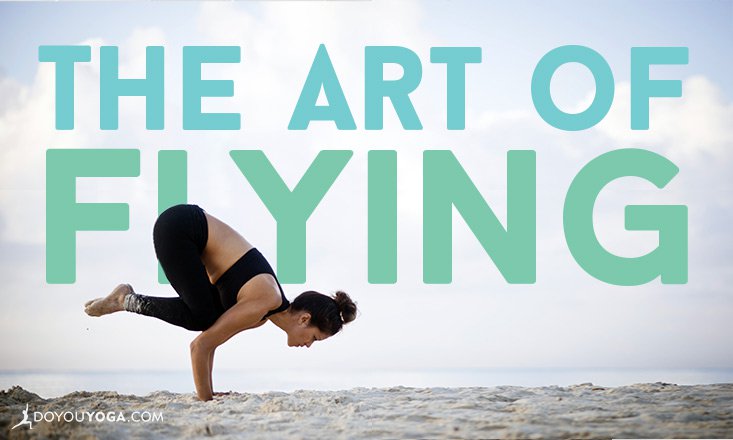Do we really need to stand on our hands? Instagram would certainly have us think it so.
Tricky arm balances have become the stars of social media, a benchmark by which an aspiring yogi may be deemed worthy, a sure-fire way to fill workshops and skyrocket your career.
This leaves some wondering if yoga has become a complete circus. Perhaps not far from the truth—Krishnamacharya, the grandfather of modern postural yoga, was greatly inspired by gymnastics and body building methods, which have certainly informed much of what we do on the mat today.
While we can safely assume that an impressive handstand practice is not the direct road to enlightenment, there is something irresistibly joyful and intriguing about the family of arm balances. So why should we do them?
Here are five reasons a playful approach to practicing arm balances will benefit your yoga practice and your life:
1. Change your perspective.
At the very least, an arm balance forces us to get our faces unusually—and often uncomfortably—close to the ground. Inverted arm balances like headstands and handstands also force us to turn the world upside down.
Shaking up our "normal" daily view has both physical and metaphorical benefits. Physically, this change in perspective challenges proprioception. When we first move into arm balances, especially inverted ones, it’s often difficult to know where we are in space.
We have no idea where the hips are in relationship to the shoulders, we get confused about left and right and up and down. As awareness improves, we deepen our capacity for balance and grace in any orientation.
Metaphorically, turning the world on its head may help us to approach life from new vantage points. As you explore new possibilities in body orientation, you may discover you become more creative in problem solving at large, sharpening your ability to see all the available angles.
2. Face your fears.
For many, this change in perspective is scary! Playing with arm balances creates a space where we learn to take leaps of faith, lean into fear, and develop a more trusting relationship with our bodies and our selves.
Most often, with a little commitment and a skillful teacher, people are surprised by what they’re able to do. As they say, the magic begins outside of your comfort zone.
3. Discover the incredible lightness of being.
One doesn’t have to go far to find examples of yogis moving with awe-inspiring elegance on their hands. Advanced arm balances, however, are not as gravity defying as they may seem.
In the same way that engineers and architects are able to cantilever building elements and erect impossibly tall towers, the architect of the body knows how to perfectly distribute mass over the foundation. Any arm balance is theoretically doable when the weight of the body is evenly balanced over the root point—the pull of gravity is in fact what makes this balancing act possible.
Developing this skill allows us to more intimately experience lightness and weight in the body, and become both more grounded and more buoyant in the way that we move through our lives.
4. Dig deeper.
Of course, upper body strength is required. However, brute strength will only get you so far. A well-developed six-pack may be helpful to start, but what really holds an arm balance off the ground is subtle strength.
Superficial muscles in the body are mostly useful for big movements, whereas the small, deep muscles are what gift us stability. Learning to find and use these muscles turns our focus away from the body’s surface and attunes us to the deeper layers.
This is both helpful in creating stability and structural integration that may carry us more happily into old age, and a wonderful way of stepping into the meditative elements of the practice.
5. Never give up, always let go.
Arm balances are built on a commitment to softness. Adding challenging arm balances into our practice can teach us a lot about discipline, but too much hardness in our efforts will get in the way. One must learn to be strong, but at the same time supple.
As much as we need strength, most arm balances also require a great deal of flexibility to get into and hold.
It’s telling that many of the arm balances are named after birds and flying insects — peacock, swan, firefly, to name only a few. There is a bird-like quality—a feathery softness—required to be in an arm balance pose. The trick is to keep returning to the arm-balancing practice without becoming frustrated or tense.
Toni Morrison writes, If you want to fly, you gotta let go of the shit that weighs you down. Physical tightness or mental gripping will greatly hamper your attempts at arm balancing.
The way a bird rides the wind, we must learn to effortlessly ride the current of breath.


